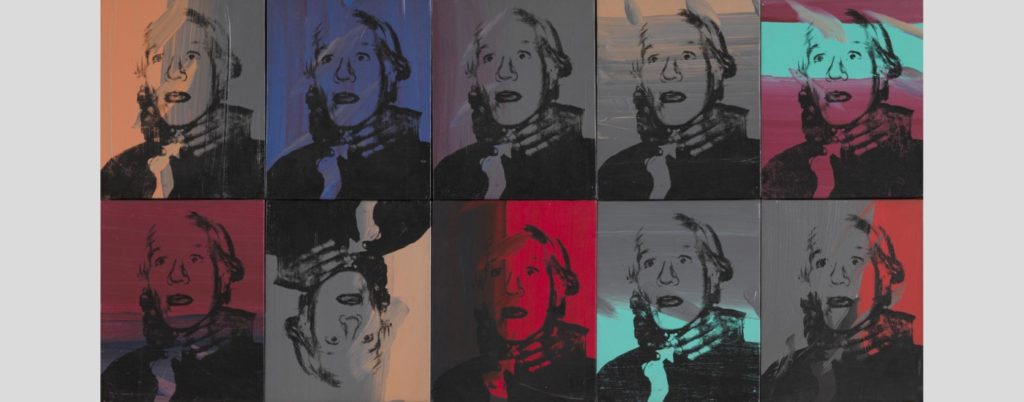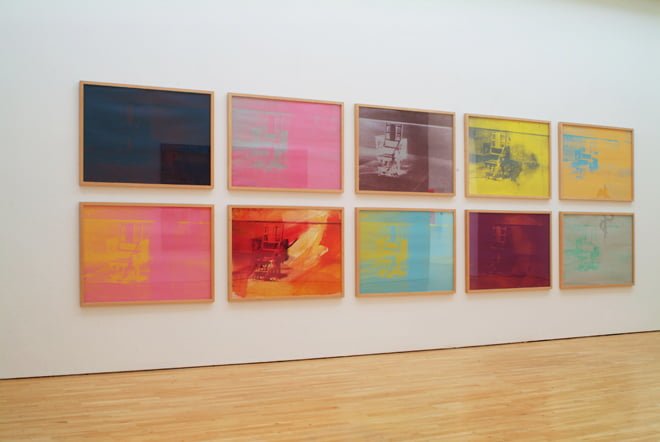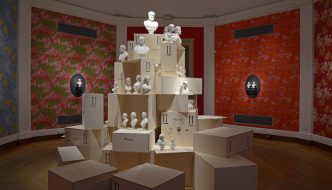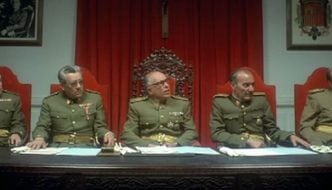
Warhol lived through arguably the most tumultuous period the United States of America has yet seen. The world came to the brink of obliteration when the country engaged in an arms race with its fellow superpower the Soviet Union from which neither could pull back. And it is this backdrop that makes Warhol’s depiction of a new-phase America, alongside the death of his physical self (a friend suffering from schizophrenia shot him in 1968), ultimately make the onlooker question their own reasons for living.
Belittling Death Itself
The very first print is Warhol’s ‘Self-Portrait With A Skull’ (1978). He bought the skull in question at a Parisian flea market and kept it on his mantelpiece to serve as a reminder of what he had just so narrowly escaped. At first glance, it seems we have here what I would term a classic death-complex: when a human being comes that close to death, they afterwards suffer some kind of guilt-driven need to prove to themselves that they were worth saving, that they should be here. Clearly, Warhol wanted to be reminded that not one more day of his life could be taken for granted, something which seems to have plagued Warhol—the theme runs deep into the exhibition.
We see his obsession with depicting death in a playful manner reach a climax with ‘The Electric Chair’, a series of repeated prints of the death instrument. Still widely in use in certain states at the time, Warhol’s particular chair reflected the recent executions of condemned US spies Ethel and Julius Rosenberg at the famous New York ‘Sing Sing’ prison, also featured in Capote’s Breakfast At Tiffany’s. However, he creates an interesting twist on such a morbid object. By choosing to print it in a garish Barbie doll pink, he somehow manages to trivialise the idea of such an undignified death. How, and why, would he choose to make such a subject playful?
‘Ads and Illustrations’
His ability to trivialise such depressing subjects continues throughout the exhibition: paralleling the ‘Electric Chair’ series is ‘Hamburger’. Created in 1985 at the centre of the fast food phenomenon in America, Warhol includes only the promise that his burger will be both ‘wholesome and delicious’. The blunt, thick lines that he uses to illustrate such a burger, though, seem to infuse his tasty promise with a sarcastic tone. This feeling of deep distrust of the suppliers of society is further stressed in ‘Paratrooper Boots’. He is, it seems, obsessed with the way our own government can lead us to death.
His sketchings and prints expertly reflect the sharp realisation we must all come to of how meaningless our world really is. Each one is is a unique reflection on a world we all are so desperate not to leave. Whatever your take on death and second chances, these illustrations of a man coming to terms with existing are profoundly affecting. Seemingly more relevant than ever in the wake of the recent US election, Warhol’s images contain a valuable message about how we should choose to live, and how we should choose to listen, to those who rule us. We may have a man much braver here than the nation which he so puzzlingly depicts in his works.
Filed under: Art & Photography
Tagged with: American artists, Andy Warhol, art, Artist Rooms, current exhibition, death, exhibition review, manchester, pop art, The Electric Chair, The Whitworth, Warhol prints




Comments